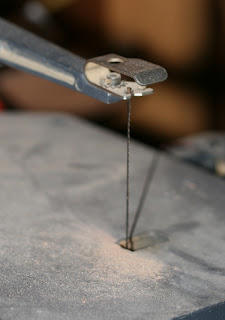I've tried various things to clamp my mast in place while allowing it enough give to turn when a reasonable degree of pressure is applied.
I attempted to clamp it (this failed; every clamp in my arsenal is intended to attach rectangles to other rectangles; they either fall off or need to be constantly adjusted.)
I attempted to screw its ends into sawhorses and make it turn like a 10' lathe (the screws came loose or simply snapped.)
May have found a simple solution; place the mast on the sawhorse and sandwich it between two chunks of 2X4. Adding a shop cloth makes it a little less wobbly and protects against gouging and scratching.








